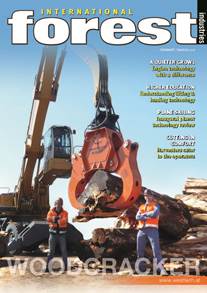EDITOR’S COMMENT ISSUE 59 OCT/NOV 2017
China still a force for forestry
The 19th National Congress of the Communist Party of China was held recently and the dominant topics up for discussion were far removed from what many economists pessimistic about the state of the Chinese economy might have imagined two or three years ago.
Then, all the talk was of the inevitable slowing of the Chinese juggernaut. GDP had almost halved since it’s double-digit peak, the shadow banking industry was apparently running unchecked, and the debt being racked up by local government had placed the country on the precipice of crisis. This was all happening as the government was meant to be tackling a challenge that had been approaching for a decade – transitioning from a developing world, export economy to a first world, consumer economy.
But at some point, perhaps 18 months ago, talk of the inevitable implosion of China’s economy started to fade away. China was taking steps to manage its debt but had continued to stimulate its economy and move industry down the value chain.
As the world’s media recently watched for indications of Communist Party priorities, they watched for the internal political positioning of Xi Jinping as he tightened his grip on Chinese politics; and for signs of how he might attempt to manage the dual volatility presented by Donald Trump and Kim Jong-un.
Conspicuously, there was little conjecture or concern over the country’s economic fortunes.
Jinping and his colleagues’ ability to successfully manage China through a period of intense peril is a function of both fortune and skill.
While major debt issues and economic transition on the scale seen in China are not solved without a material degree of fiscal prowess, executing rescue plans is made much easier when the party and the party’s leader enjoy absolute control over almost every aspect of the country’s power structure.
This is precisely why India has not, and never will, be ‘the next China’ as many in the forestry sector have hoped when they considered the void a slowing China might leave in the demand for raw materials. India, with its corrupt, disjointed and devolved democracy will never be organised enough to grow like China has.
Jinping has also benefited from a timely return to form for the economies of the United States and the European Union, which have both enjoyed an uptick in growth, which has taken the pressure off China and also gifted the forestry sector a long-awaited boon in demand.
The importance of China success for the entire forestry world but directly for its regional partners was seen in the most recent set of numbers from the Wood Resource Quarterly, which highlighted the effect the nation’s continued growth was having on Australia.
“Australia has rapidly become a major exporter of softwood logs and was the world’s sixth largest log exporter in 2016,” the report stated. “During the first half of 2017, the upward trend continued with shipments being 17% higher than in the first half of 2016.
“In 2012, Australia’s annual exports totalled only 1.2 million m3. Just four years later, in 2016, exports had tripled to a record high of 3.6 million m3, of which 96% was destined for China.
“If the upward trend seen this far in the first six months of 2017 continues, export volumes will end up totalling over four million m3 in 2017, which represents approximately 25% of the total softwood timber harvest in Australia.”
Australia is of course not the only beneficiary of strong growth out of China but tracking its fortunes provides a useful bellwether for China’s impact on forestry in general. Provided the political structure and ambitions remain consistent, it is difficult to see a time when China won’t be a key demand centre for our industry, no matter what the doubters may say.
Enjoy
Chris Cann








